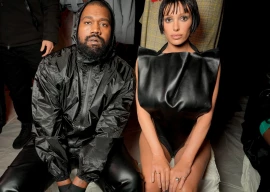
KABUL: Taliban chief Mullah Omar cast a long shadow over Afghanistan ever since he led a young band of zealots to power almost two decades ago, imposing brutal Islamist rule over the country.
Afghanistan on Wednesday confirmed the reclusive warrior-cleric had died two years ago in Pakistan amid frenzied speculation about his demise.
While the Taliban have not officially commented on the reports, this is the first official confirmation from the Afghan government that Omar is dead after years of rumours of his ill health.
The one-eyed leader outraged the international community with his fundamentalist regime's treatment of women, its enforcement of Sharia law and strict bans on most sport, television and music.
He incurred the wrath of the United States by giving shelter to al Qaeda chief Osama bin Laden, prompting a US-led invasion of Afghanistan after the September 11 attacks in 2001.
After his government was toppled in Kabul later that year, Omar headed a raging anti-government insurgency from the shadows.
Even though he had not been seen in public since 2001, Omar remained a unifying figure for Taliban forces attempting to seize power even as the Islamic State group has begun to encroach on their traditional domain.
For one of the world's most wanted men, relatively little is known about Omar. He was hardly ever photographed and said in rare interviews that he had never flown on a plane and had left Afghanistan just once, to visit Pakistan.
His US State Department website wanted profile, which offers a $10 million bounty, has two indistinct pictures and almost no details except that he is tall with a black beard and a shrapnel wound to the right eye.
But a long official biography published by the Taliban online in April -- apparently to counter the creeping influence of IS, which has reportedly welcomed Taliban defectors -- described him as "charismatic" and closely involved with the outfit's military operations.
It also listed his favourite weapon as the RPG-7, a rocket propelled grenade, and praised his even temper and "special" sense of humour.
An ethnic Pashtun from a humble background, Omar was born in 1960 in the village of Chah-i-Himmat in Kandahar province, according to the Taliban biography, and educated on a diet of Koranic verses at religious schools.
He lost his right eye while fighting with the Afghan mujahideen against the occupying Soviet Army in the 1980s. Taliban legend has it that he cut out the wounded eye himself, while more prosaic accounts say he was treated at a hospital in Pakistan.
After the Soviets pulled out in 1989 he returned to his native area as a prayer leader and teacher.
There, he began to attract a band of religious students -- "Taliban" means students in Pashto -- and former mujahideen to fight the warlords holding sway over much of Afghanistan.
Omar's authority was both military and religious, and he enhanced both in April 1996 when he appeared on the balcony of a shrine in Kandahar wrapped in a cloak said to belong to the Prophet Mohammed (pbuh).
In September 1996, the Taliban captured Kabul from the Northern Alliance and brutally executed former president Najibullah.
Omar's relationship with the man who would eventually lead to the regime's downfall began soon after Bin Laden arrived in Afghanistan in late 1996, following the Saudi's expulsion from Sudan.
The al Qaeda supremo reportedly curried favour with the Taliban leader, who was hailed by his supporters for his military prowess.
According to Yossef Bodansky, author of a book on the al Qaeda founder, they cemented their ties in 1998 when Omar married bin Laden's oldest daughter.
But as Omar's profile grew in the Muslim world, so did the opprobrium heaped on him by the West. The Taliban were recognised as the legal government only by Pakistan, Saudi Arabia and the United Arab Emirates.
Omar and the Taliban provoked international outrage in March 2001 by blowing up the giant Buddha statues of Bamiyan.
By the end of the year the Taliban regime, too, lay in ruins following the onslaught by US-led and Northern Alliance forces after 9/11.
In the last public statement attributed to Omar, he was said to have endorsed as "legitimate" peace talks that began this month aimed at ending the 13-year insurgency.
















































COMMENTS (2)
Comments are moderated and generally will be posted if they are on-topic and not abusive.
For more information, please see our Comments FAQ